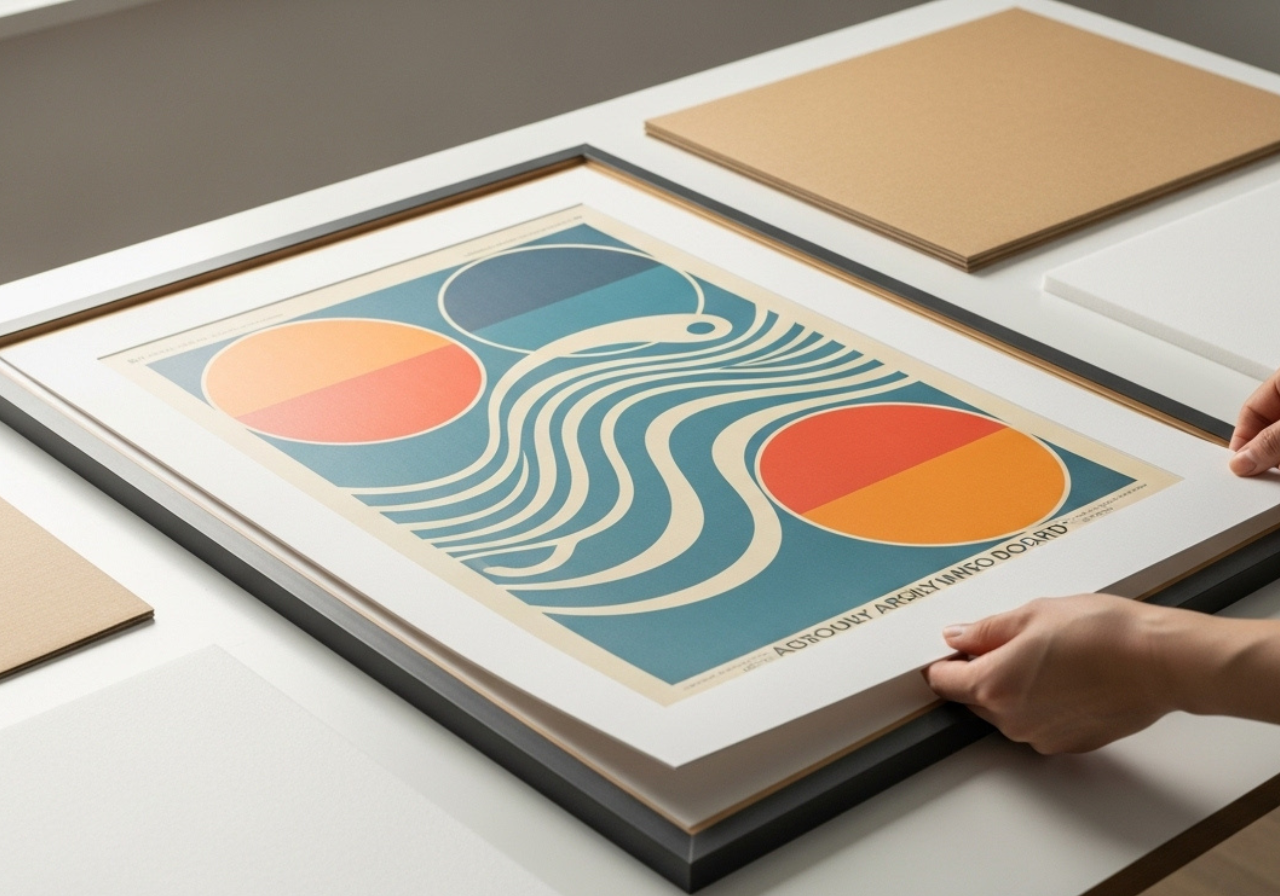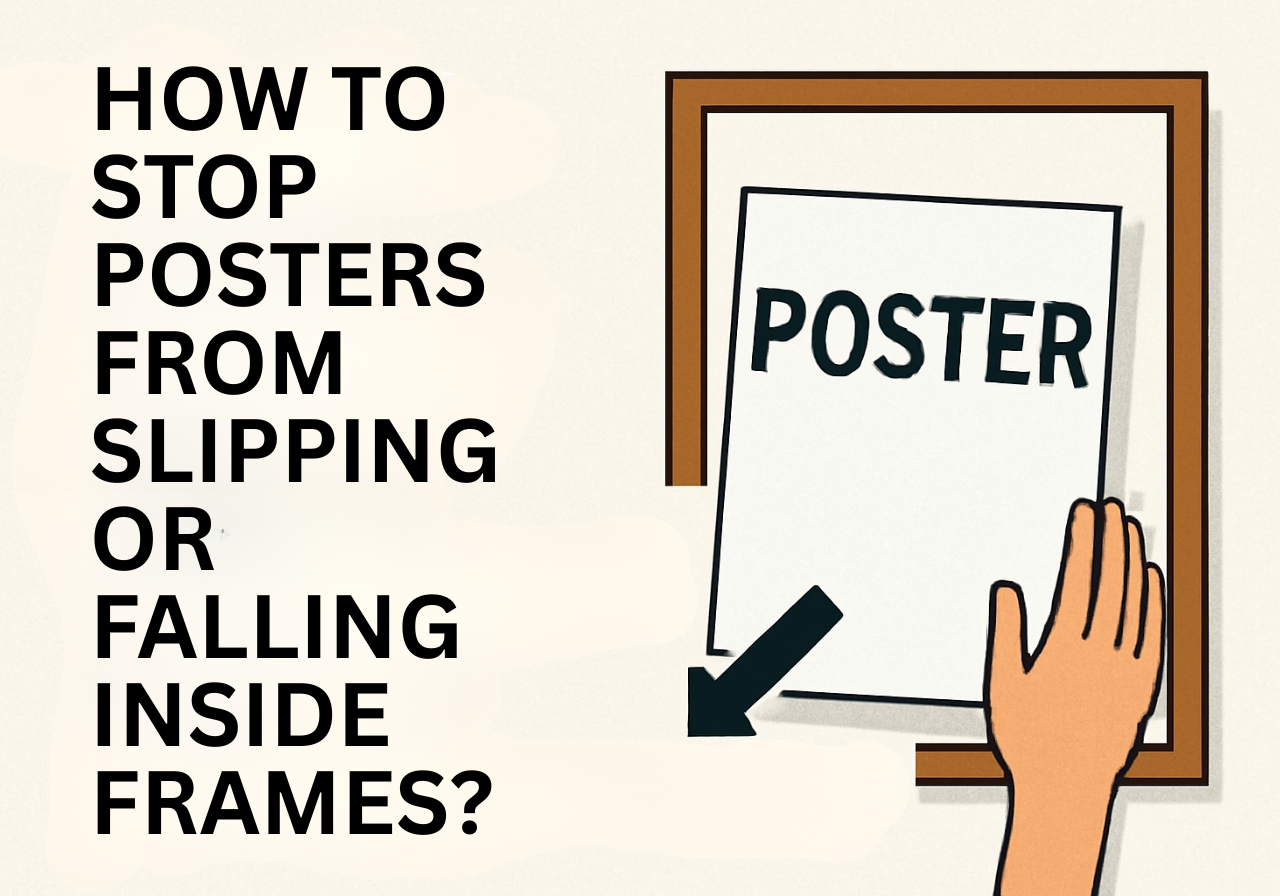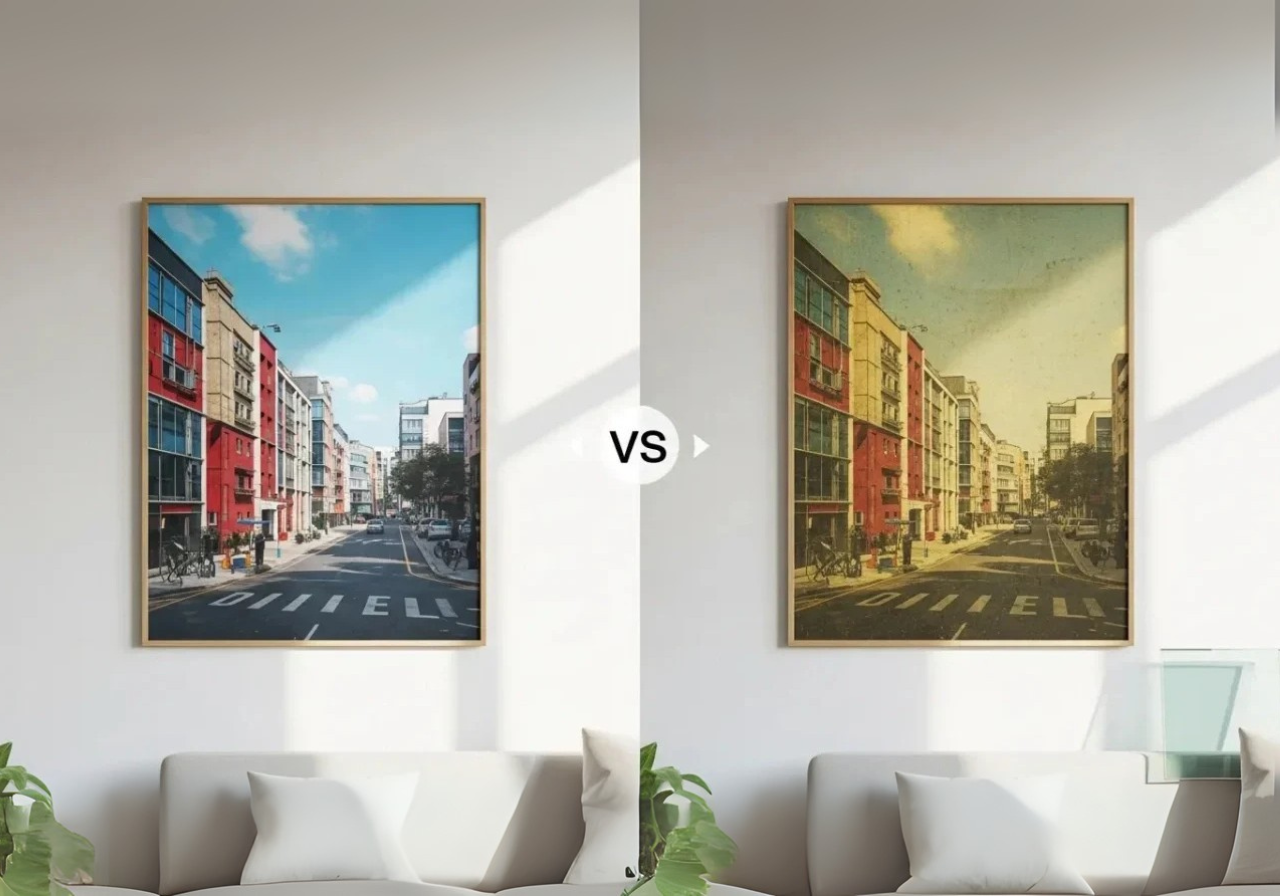When most people buy a poster frame, they focus on the glass or acrylic cover and the frame’s style. But there’s one part that quietly does most of the work: the backing board. This piece, usually hidden, sits behind your poster and makes sure it stays flat, supported and protected. If the backing is cheap or worn out, your poster won’t look as sharp as it should. Over time, it might even cause permanent damage.
Understanding what backing boards do and how to replace them is the key to keeping posters in great condition. Whether your poster is a movie print, band art or a collectible, the right backing board can make the difference between a crisp, polished display and a wrinkled, sagging mess.
Why Backing Boards Matter
A backing board may look like nothing more than a sheet of cardboard but it plays several important roles.
-
Support for Thin Paper
Posters are often printed on lightweight paper. Without a firm surface behind them, the paper naturally curls or bends. The backing board keeps the paper flat, giving the poster a neat, professional appearance. -
Protection Against Damage
Posters can be fragile. Moisture, dust or even the natural acids in cheap cardboard can eat away at the paper. A proper backing board shields your poster from these threats. If the board is acid-free, it adds another layer of defense by preventing yellowing or staining. -
Frame Stability
Cheap or thin backings don’t stay rigid for long. They bend, warp or separate from the frame. This creates gaps inside the frame where the poster can slip. A strong backing board holds everything tightly in place so the poster stays centered.
A good backing board isn’t just an accessory. It’s the foundation of a long-lasting display.
Types of Backing Boards
There’s no one-size-fits-all backing board. The right choice depends on the type of poster you’re framing and how much you value preservation.
-
Standard Cardboard Backings
These are the boards that come with most store-bought frames. They’re thin, inexpensive and good for casual displays. But they bend quickly and often contain acids that can discolor paper. They’re fine for short-term use but not for posters you want to protect. -
Foam Boards
Foam boards are lightweight yet very rigid. They prevent bending and keep the poster pressed flat against the glass. Because they come in standard frame sizes, they’re easy to replace. Foam boards are a popular choice for large posters because they stay sturdy without adding weight. -
Mat Boards
Mat boards are similar to the mats used around photos and art prints. They’re thicker than cardboard and often acid-free. This makes them a good option for posters that you want to preserve but don’t necessarily consider collectible. -
Archival or Conservation Boards
These boards are designed for long-term preservation. Made from acid-free, lignin-free materials, they prevent posters from yellowing or becoming brittle over time. If you have a rare, vintage or valuable poster, this is the best choice. They cost more, but they’re the safest way to protect your investment.
Signs You Need to Replace a Backing Board
Not all backing boards fail overnight. Often, the decline is slow and you may not notice until the poster looks off. Here are clear warning signs:
-
Poster Slipping or Sagging
If your poster shifts downward in the frame, the backing is likely too weak or warped to hold it in place. -
Loose Frame Fit
When you pick up the frame and feel movement inside, the backing is no longer pressing firmly against the poster. -
Visible Damage on the Board
If the board itself looks warped, stained or water-damaged, it’s not doing its job. A warped board can bend the poster along with it. -
Poster Damage
Wrinkles, yellowing or uneven fading on your poster could mean the backing board is acidic or allowing moisture in.
If you notice any of these issues, replacing the backing board will improve both the look and longevity of your framed poster.
How to Replace a Backing Board
Replacing a backing board isn’t complicated, and you don’t need professional framing skills. With a few tools and a bit of patience, you can do it at home.
What You’ll Need:
-
A new backing board (foam, mat or archival, depending on your needs)
-
Measuring tape or ruler
-
A utility knife or sharp blade
-
A flat cutting surface or mat
-
Photo corners, archival hinges or double-sided mounting tape (optional)
Step 1: Open the Frame
Lay the frame face down on a clean surface. Remove the tabs, clips or screws that hold the back in place. Take out the old backing, the poster and the glass. While the frame is open, clean the glass with a lint-free cloth.
Step 2: Measure the Frame Interior
Measure the inside of the frame where the backing will sit. Write down the width and height. For accuracy, measure twice.
Step 3: Cut the New Backing Board
If the board is larger than your frame, cut it down to size with a utility knife and straight edge. Place the board on a cutting mat to keep the edges neat.
Step 4: Secure the Poster
If your poster tends to slip, attach it to the board. For casual posters, you can use small strips of double-sided mounting tape. For valuable posters, use photo corners or archival hinges to avoid direct adhesive contact.
Step 5: Reassemble the Frame
Place the poster on the new backing and slide both into the frame. Put the glass back on top, then secure the frame with its clips or tabs. Check that everything fits tightly and that the poster looks even and centered.
Tips for Long-Lasting Results
-
Always choose acid-free boards for posters you want to preserve.
-
Store and hang framed posters in areas with low humidity to prevent warping.
-
For large posters, foam boards provide the best support.
-
Avoid using regular tape or glue directly on the poster. They can leave marks and cause damage.
-
If you frame posters often, buy foam or mat boards in bulk sheets and cut them to size when needed.
Final Thoughts
The backing board inside your poster frame may not be visible but it has one of the most important jobs. It supports thin paper, protects against damage and keeps the poster stable inside the frame. Cheap backings often fail, leaving your poster wrinkled or damaged. By upgrading to foam, mat or archival boards, you give your poster the support it needs to look sharp and last longer.
Replacing a backing board is a simple project but the payoff is huge: a professional-looking display and peace of mind that your poster is safe.






